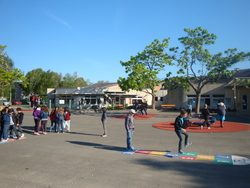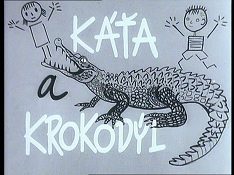27/03/18
Today was exciting as I got to go on a school trip to Paris. The trip was linked to their topic on kitchen objects and we went to a museum that displayed vintage and historical kitchen utensils. I went with Agnés Courgeon, Christine Aué and their classes CM1/CM2 and CM2.
We left for Paris at 10am so before we left I observed CM2’s history lesson. Agnés Courgeon took this lesson with Christine Aué’s class, as she knew more about the topic. I gathered it was about the history of kitchen objects in France, in particular a utensil for chocolate. They were studying fro a textbook and the children we asked to read and discuss passages with the class.

Musée des Arts Décoratifs.
We left for Paris on a bus and stopped for lunch when we were half way to Paris. Once we arrived in Paris I already recognised some streets and architecture for my previous visit. When we got to the centre I knew exactly where we were. The museum we went to was called, Musée des Arts Décoratifs and was within the complex where the Louvre is, I visited the Louvre on my last visit. We were welcomed into the museum and a tour guide took us to a classroom. From our classroom window you could see the Louvre and top half of the Eiffel tower. What a view for a classroom!


 Our tour guide spoke to the children about what kind of things we were going to see in the museum. She asked the children to name kitchen objects that we might see. We were then taken on our tour round the museum. We first came across an old dinning room and she spoke about its features. Throughout the tour we saw a lot of vintage and antique looking objects, mostly made from china. I was fascinated to hear and see what the French used to use in their kitchens.
Our tour guide spoke to the children about what kind of things we were going to see in the museum. She asked the children to name kitchen objects that we might see. We were then taken on our tour round the museum. We first came across an old dinning room and she spoke about its features. Throughout the tour we saw a lot of vintage and antique looking objects, mostly made from china. I was fascinated to hear and see what the French used to use in their kitchens.
During the tour chocolate was mentioned and discussed a few times. I was able to gather at one point they were speaking about a special container that hot chocolate is poured from. We then came across this container, which was like a coffee pot. We would call this invention a ‘chocolate pot’.

The love affair of chocolate that us humans have with chocolate extends back thousands of years. The Spanish introduced chocolate to Western Europe in the 17th century. Hot chocolate was discovered and made in a ‘chocolatiére’, its very own pot. At this time, drinking hot chocolate was how people enjoyed the luxury of chocolate. This was before any other invention was made to prepare chocolate.
Louis XIII of France married Anne of Austria in 1615. Anne had a large enthusiasm for chocolate and this spread to the French aristocracy. During that early modern period, the French had refined the dining experience to the point of extravagance. In that outlook, they made the chocolatière, an invention for preparing chocolate.

Chocolatière.
The chocolatière sat on three feet, a tall, thin body and had a decorative handle, which was situated 90 from the spout. The lid was of most importance. It had a delicately hinged lid; this crated a small opening for the ‘moulinet’. A moulinet was made of wood and used to mix the hot chocolate to make it frothy before serving.
In the 17th and 18th centuries, chocolate pots were made form the most expensive and valuable materials at that time, sliver, gold or porcelain. In these times, chocolate was considered exotic and a luxury to have; therefore it was paired with expensive materials.
As the industrial world evolved and chocolate become more widely available, the popularity of the chocolate pot started to die down by the 1950s. It disappeared from French households after the industrial revolution. Very few, if any, are made today.

After the tour, the children had a sense of what kitchen objects looked like in history. It was now their turn to create their own unique kitchen object. The guide took us back to our classroom where she explained how to make a bowl and decorate it like the ones we had just seen. To make the bowl we would use card and fold it in such a way to make a bowl shape. She explained that when we were to decorate it we would have to take into account which part of the card would be covered when folded so we would have to think about the flow of our design so no part of our design got cut off. I was impressed with my French language knowledge at this point as I was able to follow what the guide was saying.

I got the opportunity to join in with the activity and create my own bowl too. The design we were asked to put on out bowl was one that involved bamboo plants. She showed us examples of bowl, cups and other kitchen objects that were made out of card with the bamboo pattern on them. The design would be drawn in blue watercolour pencil and then water washed over to create the vintage china look.
I thoroughly enjoyed the trip as I was able to take responsibility for the children safety whilst out of the school and I was able to see how the classes topic was taken further into a school trip so that the children could put their learning into a context and see the physical kitchen objects that used to be used.
References:
Righthand, J. (2015). A Brief History of the Chocolate Pot. [Website]. Smithsonian.com . Available at: https://www.smithsonianmag.com/smithsonian-institution/brief-history-chocolate-pot-180954241/ [Accessed 28/03/18].
n.b. (2016). The Evolution of the Chocolatière: From French Innovation to Retirement in Museums. [Website]. Chocolate Class. Available at: https://chocolateclass.wordpress.com/2016/02/22/the-evolution-of-the-chocolatiere-from-french-innovation-to-retirement-in-museums/ [Accessed 28/03/18].




 Our tour guide spoke to the children about what kind of things we were going to see in the museum. She asked the children to name kitchen objects that we might see. We were then taken on our tour round the museum. We first came across an old dinning room and she spoke about its features. Throughout the tour we saw a lot of vintage and antique looking objects, mostly made from china. I was fascinated to hear and see what the French used to use in their kitchens.
Our tour guide spoke to the children about what kind of things we were going to see in the museum. She asked the children to name kitchen objects that we might see. We were then taken on our tour round the museum. We first came across an old dinning room and she spoke about its features. Throughout the tour we saw a lot of vintage and antique looking objects, mostly made from china. I was fascinated to hear and see what the French used to use in their kitchens.




 My presentation included; where I live in Scotland, our flag, the Loch Ness monster, castles, traditional food, animals, tartan, traditional sports and Scottish rhymes/poems. I started by introducing how to say “Scotland” and its translation in French. I then showed them our flag and explained that we also have a flag for the whole of the United Kingdom. I spoke about the Loch Ness monster and explained that its existence is a matter of own opinion. Nobody knows if it really exists or not. This got the children thinking what their opinion was on the mystery. I told them that castles are found all over the country and that I even live right beside one. This amazed them. I moved on to speak about the traditional food in Scotland. I taught the children how to say, “I like”, “I do not like” and “I love” in English. After this I had traditional pictures of foods on the board and I got the children to listen and repeat the food names. In particular, Haggis was an interest. They asked what it was so I had to explain that it was sheep stomach. Their reactions to this weren’t appetising. But the teachers explained to the children that this was similar to the fact that they eat snails and frogs. If you were not French you probably would turn your nose up at them. We put together sentences about which foods we do and don’t like. We then moved onto animals and I did the same, asked the children to listen and repeat the names of the animals. Unicorn was one of the animals I had on the board and I explained that this was our national animal. From this discussion I found out that their national animal is a roaster. I next showed them tartan. I explained that tartan is a pattern that can be used in anything, from all types of clothing to decorating furniture/interiors of houses. I then spoke about traditional Scottish sports, these included; highland dancing and the sports involved in the highland games. I got the classes physically involved and demonstrated, and got them to copy, highland dancing moves. They enjoyed being up out their seats and physically active for a couple of minutes. I finally read the classes a Scottish rhyme and poem. I tried to get the classes to say the rhyme with me but they found this quite advanced.
My presentation included; where I live in Scotland, our flag, the Loch Ness monster, castles, traditional food, animals, tartan, traditional sports and Scottish rhymes/poems. I started by introducing how to say “Scotland” and its translation in French. I then showed them our flag and explained that we also have a flag for the whole of the United Kingdom. I spoke about the Loch Ness monster and explained that its existence is a matter of own opinion. Nobody knows if it really exists or not. This got the children thinking what their opinion was on the mystery. I told them that castles are found all over the country and that I even live right beside one. This amazed them. I moved on to speak about the traditional food in Scotland. I taught the children how to say, “I like”, “I do not like” and “I love” in English. After this I had traditional pictures of foods on the board and I got the children to listen and repeat the food names. In particular, Haggis was an interest. They asked what it was so I had to explain that it was sheep stomach. Their reactions to this weren’t appetising. But the teachers explained to the children that this was similar to the fact that they eat snails and frogs. If you were not French you probably would turn your nose up at them. We put together sentences about which foods we do and don’t like. We then moved onto animals and I did the same, asked the children to listen and repeat the names of the animals. Unicorn was one of the animals I had on the board and I explained that this was our national animal. From this discussion I found out that their national animal is a roaster. I next showed them tartan. I explained that tartan is a pattern that can be used in anything, from all types of clothing to decorating furniture/interiors of houses. I then spoke about traditional Scottish sports, these included; highland dancing and the sports involved in the highland games. I got the classes physically involved and demonstrated, and got them to copy, highland dancing moves. They enjoyed being up out their seats and physically active for a couple of minutes. I finally read the classes a Scottish rhyme and poem. I tried to get the classes to say the rhyme with me but they found this quite advanced.





 After the main lesson I took a small group of 5 to do a worksheet on what we had just taught and used fake money to help the children work out the calculations. This meant I got more one on one interaction with the children, which meant I could try be more understanding to them in terms of my English and French.
After the main lesson I took a small group of 5 to do a worksheet on what we had just taught and used fake money to help the children work out the calculations. This meant I got more one on one interaction with the children, which meant I could try be more understanding to them in terms of my English and French.
 In the morning I with Laura Bellout in CE2/CM1. As you’ve read in my day 5 blog one of the classes were learning about the film “Katia et le Crocodile”, so today we went to the local cinema to watch the whole film with 3 other classes. This was an exciting experience as I was getting the opportunity to go to a real original French cinema. We walked to the tram and took the tram to the centre of Orléans where the cinema was.
In the morning I with Laura Bellout in CE2/CM1. As you’ve read in my day 5 blog one of the classes were learning about the film “Katia et le Crocodile”, so today we went to the local cinema to watch the whole film with 3 other classes. This was an exciting experience as I was getting the opportunity to go to a real original French cinema. We walked to the tram and took the tram to the centre of Orléans where the cinema was.



 Today I was with Axelle Holef with CE1, ages 7-8. The teacher sta
Today I was with Axelle Holef with CE1, ages 7-8. The teacher sta




 After lunch I was with the first class I’d been out with this week, which was the CP’s with Françoise Monclere. We were doing art on the topic of kitchen objects. I helped groups paint backgrounds for the kitchen.
After lunch I was with the first class I’d been out with this week, which was the CP’s with Françoise Monclere. We were doing art on the topic of kitchen objects. I helped groups paint backgrounds for the kitchen. Using the French vocabulary for the colours of paint we were using I was able to communicate to the children what they were painting with which colours. This was a good experience as I got to use some French vocabulary.
Using the French vocabulary for the colours of paint we were using I was able to communicate to the children what they were painting with which colours. This was a good experience as I got to use some French vocabulary. In the morning I arrived and was told I would be in the class CM1/CM2 with Agnés Courgeon. When the class came in I introduced myself and pointed to where I lived on a map. The children knew some English so during my introduction they asked me questions to help them find information out about me.
In the morning I arrived and was told I would be in the class CM1/CM2 with Agnés Courgeon. When the class came in I introduced myself and pointed to where I lived on a map. The children knew some English so during my introduction they asked me questions to help them find information out about me.

